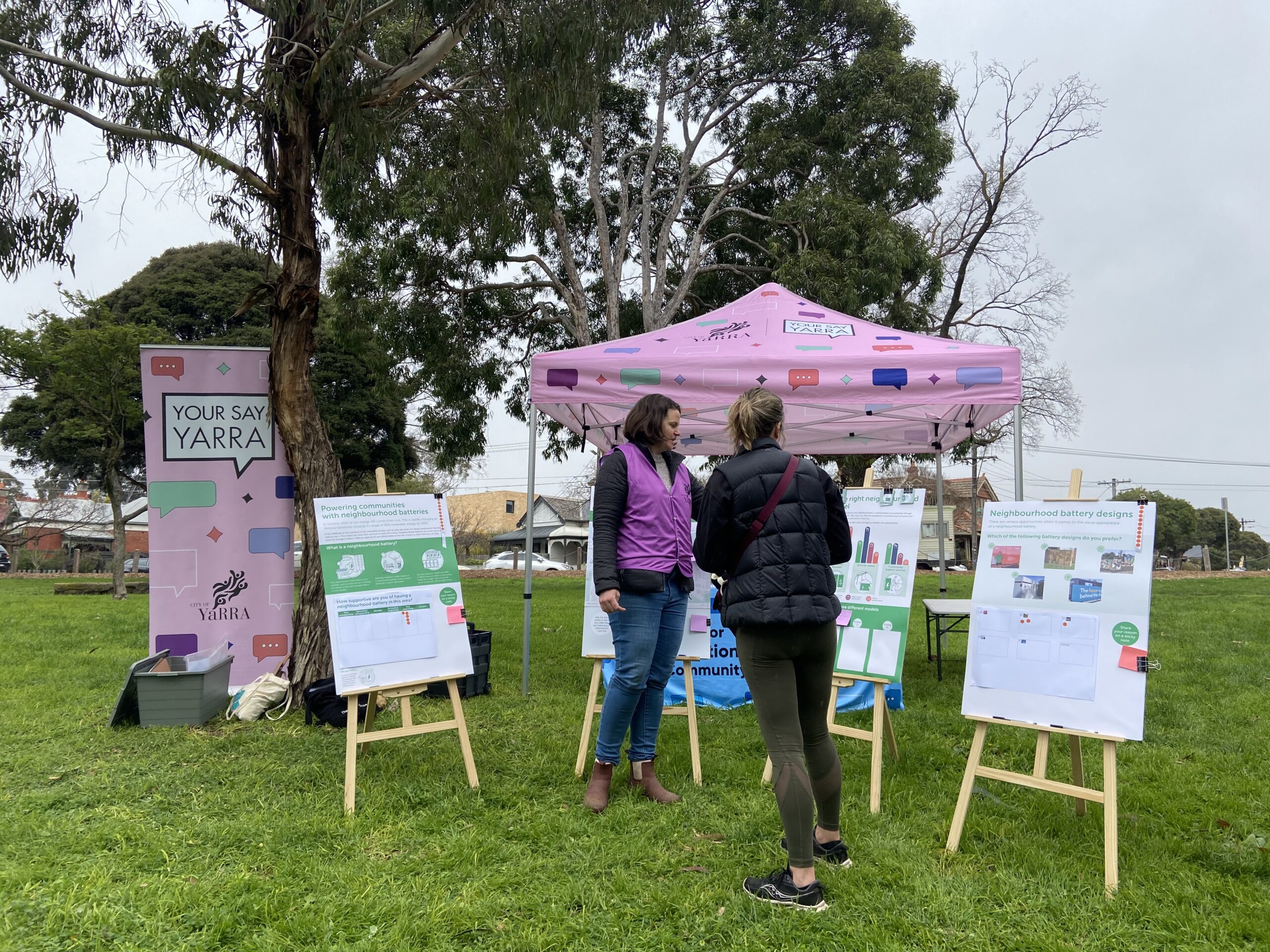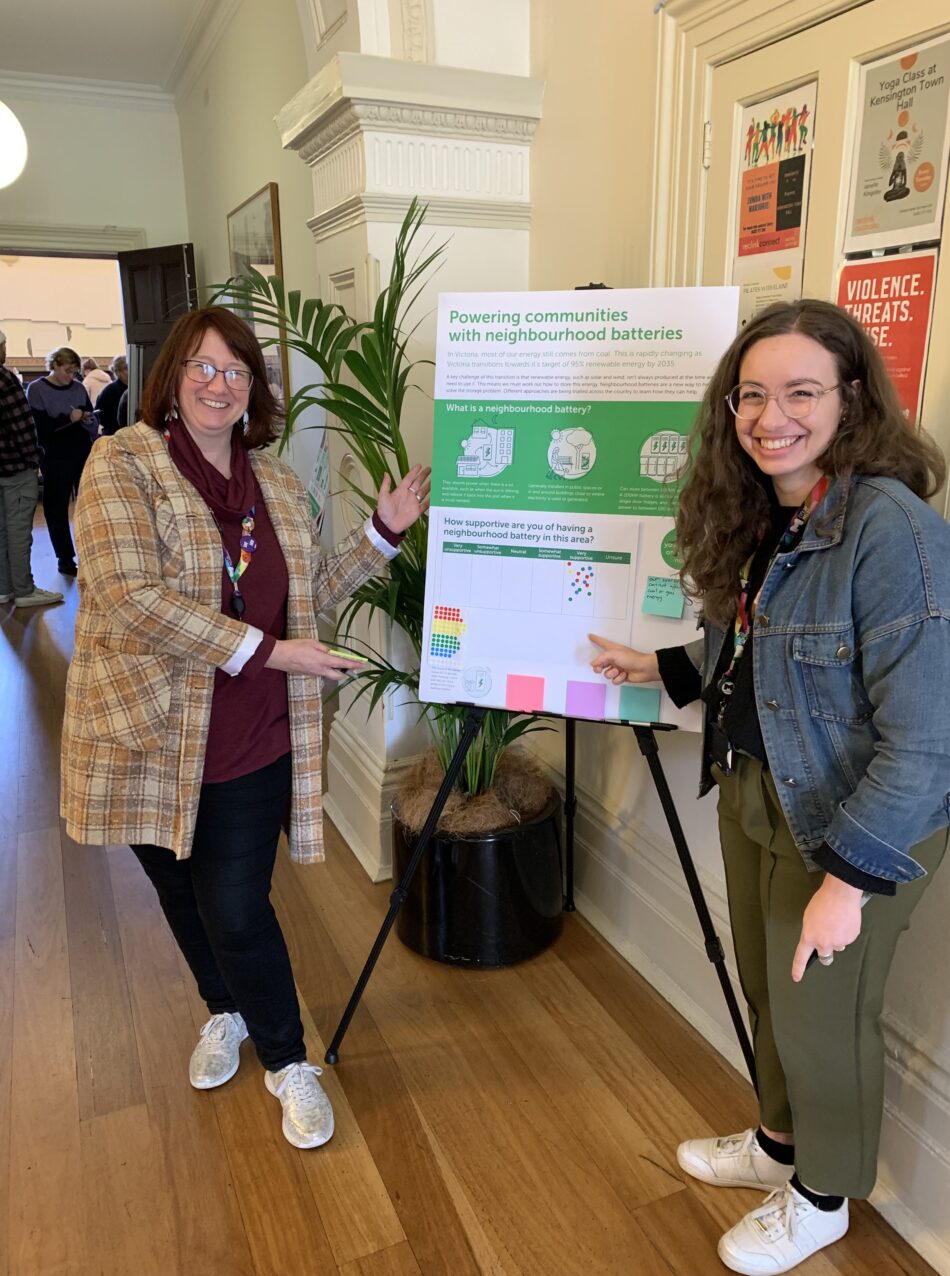
The Fast-tracking Neighbourhood Batteries Project is about understanding both the technical challenges to delivering neighbourhood batteries as well as community sentiment and opportunities for support, to be able to accelerate the roll-out of neighbourhood batteries across inner urban councils. It aims to shed light on issues such as community benefits and operational costs. Given the need for more locally available renewable energy to enable the energy transition, the Project is supported through the Victorian Government’s Inner Metro Partnership.
A neighbourhood battery is an energy storage system that delivers multiple benefits, such as increasing the amount of solar that can be installed locally, increasing access to renewable energy, and reducing pressure on the electricity grid. Neighbourhood batteries can also help people who were previously unable to access renewable energy – such as renters, apartment dwellers and small businesses – to share in the benefits.
The three councils are working in parallel with Yarra Energy Foundation to identify possible future locations, based on a range of technical features that offer high potential to successfully host a neighbourhood battery.
Inviting communities to get involved in designing a delivery method that responds to the local context helps build social license and generate the best community outcomes. When it comes to renewable energy, we understand that communities have different values, aspirations and network challenges. Importantly, neighbourhood batteries are a very new technology and the possible benefits are often misunderstood.

Engagement program
The engagement program designed by Capire and the councils aimed to both inform the public and gauge their sentiments. We wanted to understand how people felt about potentially having a neighbourhood battery in their local area, including what benefits they would like to see and their thoughts on specific locations. First, we needed to develop their understanding of the options available and their capacity to identify preferred sites and models.
Stage 1 of the engagement program focused on the purpose and benefits, types of locations (for example, council facilities or parks), and motivations for installing neighbourhood batteries, including environmental and financial reasons, as well as their ability to provide specific services or improve network resilience. Stage 2 focused on gathering feedback on specific areas of high-potential locations. We explored with the community their preferences for different models in each area. Different operating models provide different benefits, and the community considered which benefits should be prioritised, such as emissions reduction or income generation.
It was important to ensure that community consultation reached beyond the ‘highly engaged’. We wanted to build the capacity of everyday people to contribute to the conversation and understand the different ways neighbourhood batteries can be designed to benefit communities. Working in partnership with subject matter experts, we developed communications that were direct, concise and accessible. Simplified infographics and user-friendly web content communicated highly technical and complex information in ways that were easy to understand. Certain content was translated into key community languages to ensure we reached diverse groups.
Engagement was conducted through a series of local pop-up events, online surveys and ‘Community Champions’ – individuals recruited to rapidly learn about neighbourhood batteries, to support engagement activities and promote the Project among their networks by holding informal conversations. This helped the Project team understand local priorities and questions, as well as the motivations behind them. Community Champions included a mix of people passionate about neighbourhood batteries and people who knew little about them or had concerns.
Findings so far…
During Stage 1 engagement, we found strong support for neighbourhood batteries and renewable energy more broadly. We also heard some concern around safety, maintenance and long-term investment costs. However, people were generally interested and willing to learn more. So far, through stage 2 engagement, support for neighbourhood batteries has remained high, and we are gathering diverse perspectives on how neighbourhood batteries could be delivered.
We know that more storage is needed to support the energy transition, and neighbourhood batteries are likely to be part of the solution. To ensure the success of future neighbourhood battery projects, it is vital that they are delivered in collaboration with local communities. This Project will help the councils understand how to target locations where there is existing community support, and where communities can benefit most.